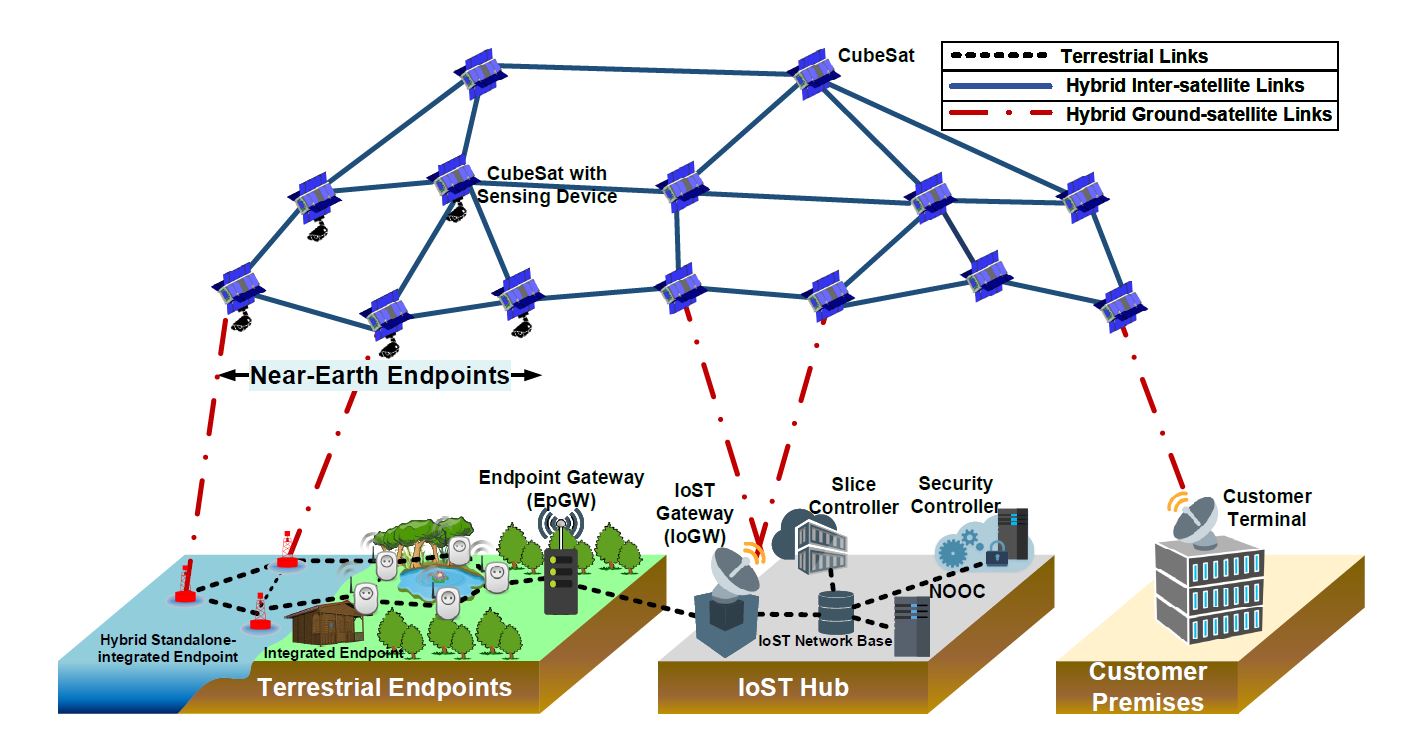Innovators at Georgia Tech propose an Internet of Space Things (IoST), a cyber-physical system that integrates on-the-ground data and satellite information to enable a wide range of applications. The space-based network leverages software-defined networking (SDN) and network function virtualization (NFV) to control and manage a system of miniaturized satellites (CubeSats) and ground-based sensing devices. Deployed in the exosphere, an ad hoc network of CubeSats plays a central role in the system, serving not only as the network infrastructure but also as passive and active sensors.
A novel network architecture provides fine-grained control over the system hardware, improving resource utilization and simplifying management. The system enables programmable control over the physical, link, and network layers of the CubeSats and the sensing devices on the ground. Security is built into the IoST architecture as well as delivered as a service to protect the availability, integrity, and privacy of all connected resources and information.
A key enabling feature is a reconfigurable multiband transceiver and antenna array that increases throughput of satellite communication networks and enhances the spectrum usage efficiency in both ground-satellite and satellite-satellite links. The innovative design supports multiband wireless communication at microwaves, millimeter-wave, and terahertz band frequencies. The integration of the transceivers with the electronically reconfigurable antennas leads to small form-factor front-ends, boosting network capacity and enabling transformative applications such as Internet service in remote or underserved regions and intelligent global transport management.
- Comprehensive: Provides a fully integrated cyber-physical system that allows for active sensing, passive sensing, and data communications
- Robust: Offers a dynamic and scalable network configuration with a centralized control that enables and simplifies data aggregation
- Cost effective: Permits highly differentiated networking capabilities to be integrated and deployed over the same network infrastructure, using CubeSats to decrease costs
- Flexible: Connects physical objects, vehicles, appliances, and devices to a diverse set of on- and near-Earth endpoints (e.g., terrestrial, underground, underwater)
- Secure: With security built into the IoST architecture, manages traffic from disparate services with differing security profiles to protect the availability, integrity, and privacy of all connected resources and information
- In-space backhaul for data reporting and forwarding between CubeSats and/or ground infrastructure
- Internet service in underserved or disrupted regions
- Terrain and asset monitoring
- Global transport management
- Remote sensing
- Deep space exploration
CubeSats are a promising solution for future satellite communication networks because of their low costs and short deployment cycle. Currently, CubeSats communicate at conventionally allocated satellite communication frequencies. However, with the increase in the number of CubeSats, CubeSat-enabled communication systems, and many new use cases, new spectrum bands and more efficient spectrum usage are needed.
The proposed IoST is an integral solution to enhance and complement the functionalities of future wireless communication networks.

System architecture overview
